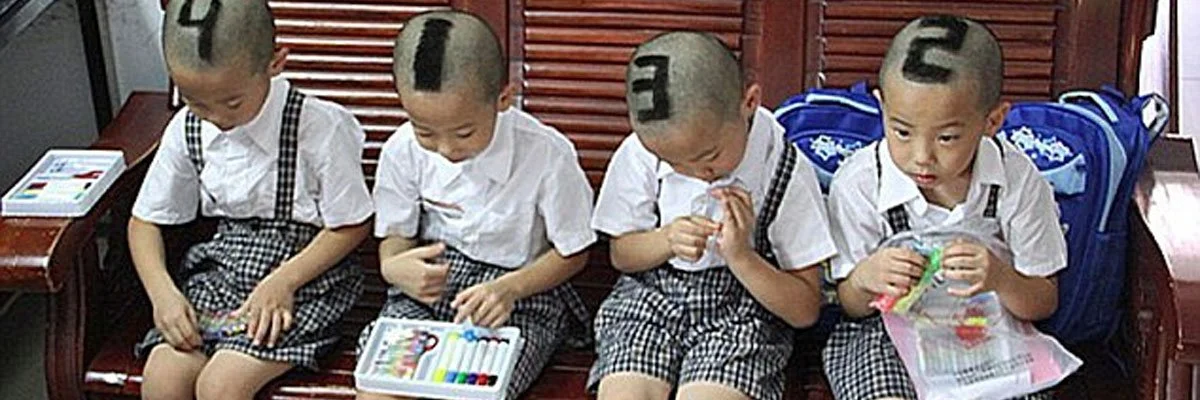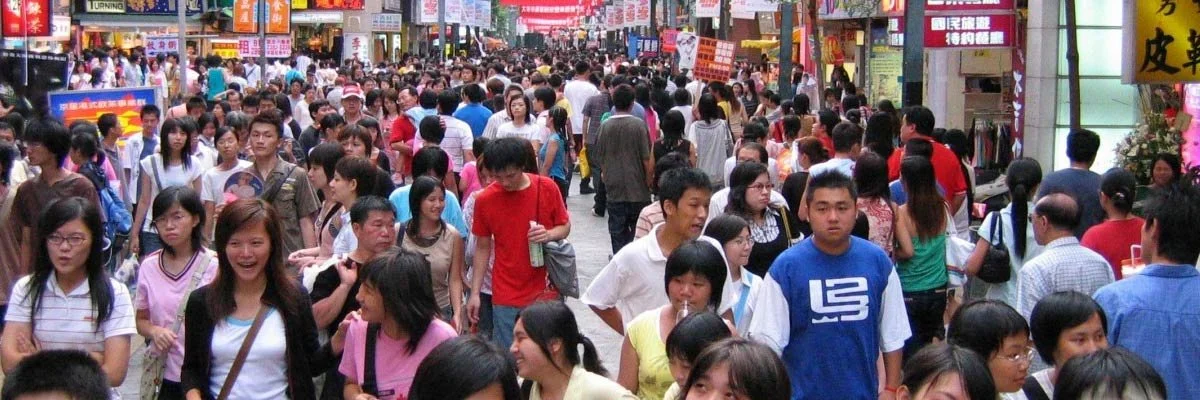Blue Moon: How not to connect with your target audience in China

Blue Moon. What were they thinking?
To their credit, the 32 year-old home cleaning company has evolved from just marketing the ingredients and efficacy of their products to tapping into Chinese consumers’ increasingly emotional connection with brands. But they illustrate how even Chinese brands can be out of touch, particularly those who make all of their decisions just using big data.
In what would have been a costly campaign, Blue Moon brought in top Douyin KOL, Mr. Dong, and plastered him all over office buildings and apartment elevators to celebrate Mother’s Day. The campaign aimed to use the sacred occasion to connect with one of its key target audiences, China’s mums. It did the opposite.
Blue Moon’s out of home advertising translated to this: "In the past, mum used a big bottle of laundry detergent to wash our clothes, which was heavy and tiring. Now, with extraordinary future laundry technology, mum's laundry is easier, lighter, and more effortless." In addition, on a Mother’s Day gift box, they printed the slogan “妈妈,您先用 (Mum, you use it first).”
It's likely in the halls of Blue Moon HQ in Guangdong, execs were back slapping and high fiving about how much better mums’ lives were as a result of their product innovations. Mums weren’t feeling it.
Many Chinese consumers have moved on from beliefs around traditional gender-stereotypes, such as the role of laundry being exclusively a mother’s duty.
Chinese expressed how they felt all over social media, with many writing notes and sticking them to Blue Moon’s billboards and elevator ads, and sharing them on social media. Blue Moon swiftly recognised they had an issue and responded with a PR blitz.
If the first round wasn’t bad enough, Blue Moon’s PR response continued to show how removed they are from modern Chinese consumers’ psyche. Blue Moon's customer service was told to state "the intention was to express gratitude to mothers" and "regardless of who does the laundry for whom, it is all full of love." On top of that, Blue Moon's official account shared survey data, stating, "According to relevant surveys, women spend an average of 120 minutes on household chores every day, with most mothers being the main force in household chores, often spending a lot of time on family cleanliness." Seriously?
After those attempts failed to calm online posters, Blue Moon doubled down with a ¥1 million ($140K) to solicit new advertising copy from netizens, offering ¥100K for each of the top-10 taglines. The example Blue Moon gave to inspire taglines was: "I did the laundry for Mum, making life easier and more enjoyable", failing to break away from the ‘laundry = mum’s work’ message. Of the final 10 taglines they selected, six included 'mum', making consumer sentiment worse still!
Whilst Blue Moon has become a clear case study in how not to market in China, much like we saw on Women’s Day in March, Mother’s Day also brought some shining examples of how brands can capture the current societal mood and connect at an emotional level with their target audience. L'Oréal, Babycare and lingerie brand AIMER’s messaging was all bang on about freeing mums from those traditional societal roles and looking out for themselves on Mother’s Day.
There are oft-quoted figures around Chinese women being the Financial Controllers of the household accounting for three out of four purchases in China. They are particularly relevant for foreign brands, accounting for 70% of active shoppers on cross border platform, Tmall Global. Yet to reach them, you need to understand them a little better than Blue Moon.
Defining your target audience and understanding what makes them tick is absolutely essential in a market where they are now bombarded with messaging from all sides everywhere they go. That’s what China Skinny does best, providing the ability to distil those insights into actionable initiatives which connect with them at an emotional and functional level, and won’t have them thinking you’re a caveman-brand from another era. Contact China Skinny to learn about how we can help your brand connect.
And for our readers in Switzerland, China Skinny's Andrew Atkinson will be speaking on trends and developments in cosmetics in Lausanne on 3rd June. You can register through the link here or let Andrew know if you'd like to say hello.
A mixed bag for category and platform advertising last year, but some clear winners are reflected in the advertising spend
Abstract marketing taps into the audience’s curiosity and creativity, making it a powerful tool for building memorable, distinctive brand narratives in the digital age
A softening ad spend market in China reveals some changes in priorities across online platforms and shifts in spending from major categories
Social media feeds increasing filled with “rough life” posts, alongside the popularity of more authentic retail spaces are just two examples of how Chinese consumers are seeking more real, less polished marketing
China's media market is more complex and fragmented than ever. It is also unique. Digital accounts for a much larger share of spend compared to western markets, and Douyin is increasingly taking a larger share of that. But not every brand is maximising its Douyin investment
China's cross-media ad spend is unlike other markets, as new data reveals. Comparing China to the US, UK, Canada, Australia and NZ highlights stark differences
Have you watched the hit TV series The Tale of Rose that premiered this June? High-quality TV series like these offer a fantastic opportunity for brands to achieve their marketing goals in China. Check it out to see how they help brands make an impact.
At Euro Cup 2024, Chinese brands accounted for five of the 13 top-tier brands, more than any other country. The success of BYD’s sponsorship has been slightly dampened by an adult toy site in the host country of Germany
For about ¥200 ($27.50) a day, you can place your personal ad in some of China's metro stations. Chinese consumers are having a lot of fun with this platform job hunting, celebrating birthdays, proposing to loved ones, and even promoting influencer images…
Brands are exploring new advertising media. From airport luggage conveyor belts, bed sheets hanging on balconies to sewn-in labels, you might be surprised by their creativity.
Chinese household cleaning brand Blue Moon illustrates that even local brands can be very out of touch with the target audience, providing a case study of how not to market and do PR in China
Mother’s Day ads showed how socially attuned brands are to mums, with some great campaigns but also some woefully inappropriate
These CNY marketing campaigns showcase the effectiveness of integrating traditional culture with modern aesthetics
Spending on TV advertisements in China is declining as an overall share of advertising. By the end of 2019, Alibaba’s ad revenue is forecast to be 63% greater than total ad spending on TV. Nevertheless, TV advertising has its place in China and brands are getting smarter about using it to reach Chinese consumers with tactics such as product placements … even those that have humorous, but blatant promotion. The infographic below highlights some of the most effective strategies brands are using TV advertisements in China nowadays.
Fancy a tonic favoured by Chinese emperors that cures painful joints, frail kidneys, and weakness and anemia in women? Or how about a milk beverage that will enlarge your breasts from an A-cup to a D? Perhaps a coconut drink that whitens your skin and will make you more buxom?
A quick quiz to start this week's Skinny: What is the most valuable marketing company in the world? Most people probably couldn't care less, but there are a few folk in the industry who would say WPP. Whilst the company hasn't had a great year, it remains the largest marketing company in the world measured by billings and revenue.
In April 2016, pundits were predicting the demise of China’s cross border ecommerce channel after hefty new taxes were suddenly introduced on all online cross border trade. Fortunately, some slick lobbying from Alibaba and JD saw the new tax rates ‘postponed’ the following month and good old cross border was soon back on track.
Advertising on WeChat Moments can get your brand into Chinese consumers’ most personal of feeds, yet it is not cheap, with the CPM (cost per thousand impressions) north of $20 in bigger cities, with a 20% premium on short video ads.
Glance across any Chinese park, restaurant or subway and it becomes quite clear that online video is one of the most popular channels in China. It is also one of the most dynamic. This is reflected by user numbers which has seen former market leader Youku-Tudou’s 325 million active monthly mobile users fall far behind market leaders Tencent Video and iQiyi with 457 million and 442 million respectively.
When you are just one out of a heaving mass of 1.4 billion, feeling special or unique is a treasured experience not often received. As China’s cities swell and lives become increasingly homogenised brands are finding ways to make their consumers feel that unique touch.
For many Chinese, bicycles were for poor people and a cold or sweaty reminder of when few could afford a car and cities had no subways. In Beijing, just 12.5% of residents cycled in 2015, versus 38.5% in 2000.
An article in the Sydney Morning Herald last week highlighted some common misnomers about localisation and translation for China: After researching in China, an Australian vitamin brand found that their Mandarin-speaking Chief Science Officer would be most compelling speaking English in the brand's promotional videos for the Mainland market.
Keeping up with the dynamic Chinese consumer is essential for anyone selling in China, but it's also a good idea to stay abreast of ever-changing regulations. We obviously need to comply with the laws, but also understanding the regulations' nuances provides interesting insights into how Beijing wants to shape things, which affects almost every component of selling in China.
Many people, including some of the big media houses, still refer to China's population as 1.3 billion. This was true five years ago, but since 2012, the number of people living in China has been closer to 1.4 billion.
It is indisputable that Baidu is the dominant search engine in China. Although there are other search engines such as 360 and Sogou, their market share remains small compared to Baidu’s.
To make waves in the China market, you need more than just the right sales agreements and communications platforms. Having a China-optimised website, solid social media channels, and sales channels doesn’t necessarily mean consumers will come running. So, what will entice the ever-morphing Chinese consumer?
Few markets have experienced changes in the way that China has over the past few decades.
WeChat has taken China by storm. It is an important part of everyday life for the 550 million monthly active users who are largely Mainland residents, and a vital channel for millions of business accounts hoping to lure Chinese consumers to buy the wares.
With 55.2% of its 549 million monthly active users opening WeChat at least 10 times a day, the app is China’s most popular social network. Being perceived as the “Chinese Whatsapp”, WeChat offers far more features and many opportunities for brands to interact with their target market. Besides the regular user accounts, businesses can register official brand accounts to promote their products. Additionally, there are a number of functions that effectively support marketing to Chinese consumers. If you want to know more about how to effectively leverage those services, be in touch.





























There's nothing quite like staying indoors for a couple of weeks to hone in on your gaming addiction. The coronavirus outbreak and resulting time people are spending inside their homes has seen a sharp increase in Chinese playing games. At the peak of the outbreak, Chinese were spending 6.11 billion hours a day online - over seven hours for each of China's 840 million online consumers.